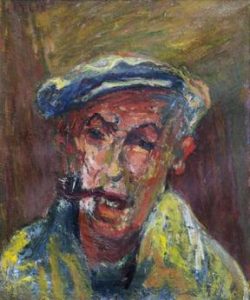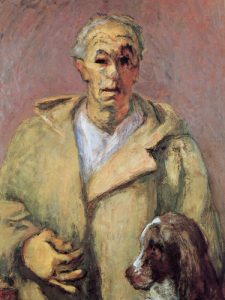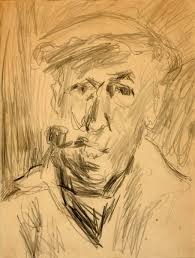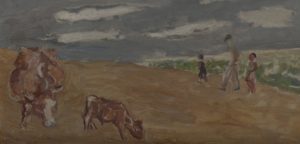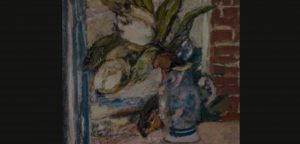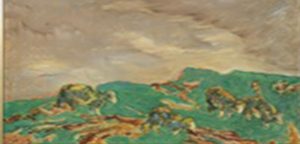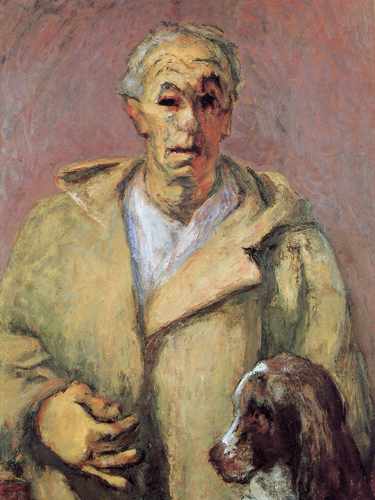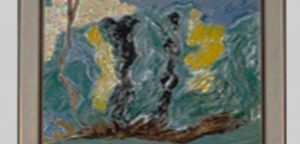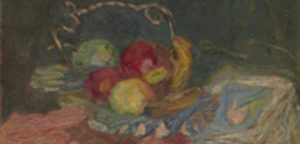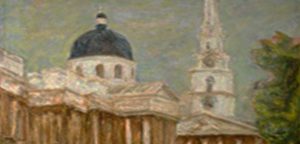He was born on the 10th of December 1890 in Krakow, Poland.
1890 - 1966
Henryk Gotlib
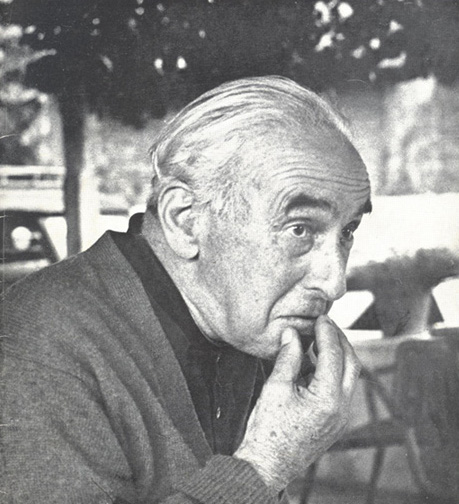
description
A Polish artist, teacher, and publicist.
Young Henryk studied painting at the Academy of Fine Arts in Krakow near Wojciech Weiss. In parallel with art education, he studied law at a local university.
Henryk Gottlieb lived and worked for a long time in England, where he was a member of Modernist community “The London Group”, he also exhibited his works repeatedly in Paris. Despite his success abroad, the artist did not lose touch with his homeland, participated in exhibitions of contemporary Polish artists and in 1919 became one of the founders of “Formist group”, which opposed Academicism and naturalistic imitation of nature. Gottlieb was an active participant of “The Society of Polish Artists” and together with his colleagues organized the “Voice of Artists” studio in Krakow. In the 1930s, he taught painting and drawing at the Mehoffer Art School, and later lectured at The College of Art in London and Hampstead. Henryk Gottlieb published two books on art: “Polish Painting” and “The Wanderings of the Artist”, which contain a lot of information about the European art culture of the early twentieth century.
Key ideas:
– Painting of Polish artist Henryk Gottlieb differs in the breadth of his artistic vision and bold color solutions. The painter did not accept the Impressionist light and the festive perception of the world. In his works, he tried to express the true essence of things, using his imagination and filling the pictures with bright emotions.
– The artist painted portraits, nudity and landscapes. His experiments with various techniques and styles led to the emergence of an expressive individual style, where the main role is played by color and texture.
– Working in the studio or in the open air, the artist used what he saw only as the basis for the picture. He painted freely, with wide strokes and large planes of intense color. Simplifying forms, thickening colors and organizing space in his own way, Gottlieb achieved an amazing effect of real life with her direct impressions and sincere feelings.
– The main character of the artist’s paintings is the color. It expresses the emotions of the creator, his mood, and attitude to the surrounding reality and to his model. The whole essence of the image is the interaction of color tones, sometimes strong, deep, saturated; sometimes pale, only slightly glowing from within.
– Looking at the pictures of Henrik Gottlieb, the viewer feels that for the author it did not matter what was painted on the canvas: a nude girl or a rural landscape, since the main thing is to convey the dynamics of the image, its internal strength and energy.
1890
1911
1914 - 1918
1919
1923
1930
1939
1940
1960
1966
The birth of the artist
He continued his studies in Vienna
He continued his studies in Vienna, attending the School of Arts and Crafts (Kunstgewerbeschule) for two years, and then went to Munich, studied at the Academy with Angelo Janka (a member of the Munich Secession). Got acquainted with the works of Expressionists. The paintings by J. Rouault, M. Beckmann and E. Schiele made a great impression on him.
In 1917, his first solo exhibition
At the beginning of the First World War, he was drafted into the Austrian army, but spent most of the war working in the press service in Warsaw. At that time, the artist improved his skills and participated in several exhibitions. In 1917, his first solo exhibition organized by the Society of Polish Artists was held in Warsaw.
"Formists"
He became one of the organizers of the association of Polish avant-garde artists “Formists”, which included, in addition to artists, poets and publicists who opposed the dominance of Academicism. A number of exhibitions of members of this creative union were organized. In 1922, the Van Gogh Gallery in Amsterdam held an individual exhibition of the works of Henryk Gottlieb.
Went to Paris
Went to Paris, where he stayed for a long time and took part in exhibitions of the Autumn Salon, the Society of Independent Artists and the Tuileries. For some time, the artist lived in the south of France and in Brittany. In Paris he became a member of the organization “Circle of Polish Artists” and was a correspondent of “The Parisian Time” in Warsaw. In 1924, an album of lithographs named “Love on the street” was published.
Gottlieb lectured at the Ludwig Mehoffer’s School of Painting
He spent a lot of time in Krakow, where he contacted the avant-garde environment of the city, collaborated with the directors and artists of the Crico Theater. Gottlieb lectured at the Ludwig Mehoffer’s School of Painting and became a member of several Modernist organizations. The artist published his critical articles about art in “Literary News” magazine and edited “The Voice of Artists”. During these years, he traveled a lot, visited Italy, Spain and Greece, where he spent several months. In Britain, which Gottlieb visited in 1938, he met his future wife Janet March.
He moved to England
In connection with the outbreak of World War II, he moved to England. The artist’s studio in Warsaw was destroyed as a result of the first bombings, and he stayed in Britain for the rest of his life. Here Gottlieb joined the London Group and participated in many joint exhibitions with British avant-garde artists. The artist taught at the College of Art in London. During the war, he completed his book “Polish Painting”, which he started to write in Warsaw.
Participated in the exhibitions
After the war, he continued to actively engage in exhibition activities. Participated in the exhibition of Polish artists in Norwich, Halle and Bradford, as well as in “The Exhibition of works of Polish and Czechoslovak artists” in the Museum of Ashmole in London. He visited Warsaw and Krakow several times, continued working on book “The Journey of the Artist”, a part of the manuscripts of which were destroyed during the war.
"Fifty Years of British Art"
He was engaged in painting and graphics, as well as sculpture, stage design and pedagogy. The artist’s style changed towards more dramatic and sharp, the color palette darkens. Gottlieb still participated in various exhibitions, the most significant of which was “Fifty Years of British Art”, held in the Tate Gallery.
The death
Henryk Gotlib passed away on the 30th of December in 1966. Godstone, Great Britain.
Henryk Gotlib
On Artist
flow
Фовизм
Экспрессионизм
friends
Войцех Вейс
Титус Чижевский
Леон Хвистек
artists
Пьер Боннар
Анри Матисс
Андре Дерен
Эдуар Вюйар
Оскар Кокошка
Макс Бекман
Хаим Сутин
Жорж Руо
Рембрандт
Эгон Шиле
By Artist
flow
Футуризм
Абстракционизм
friends
Генрик Стажевский
artists
Марк Ротко
Джон Доджсон
Эдвард ле Бас
Линтон Ламб

